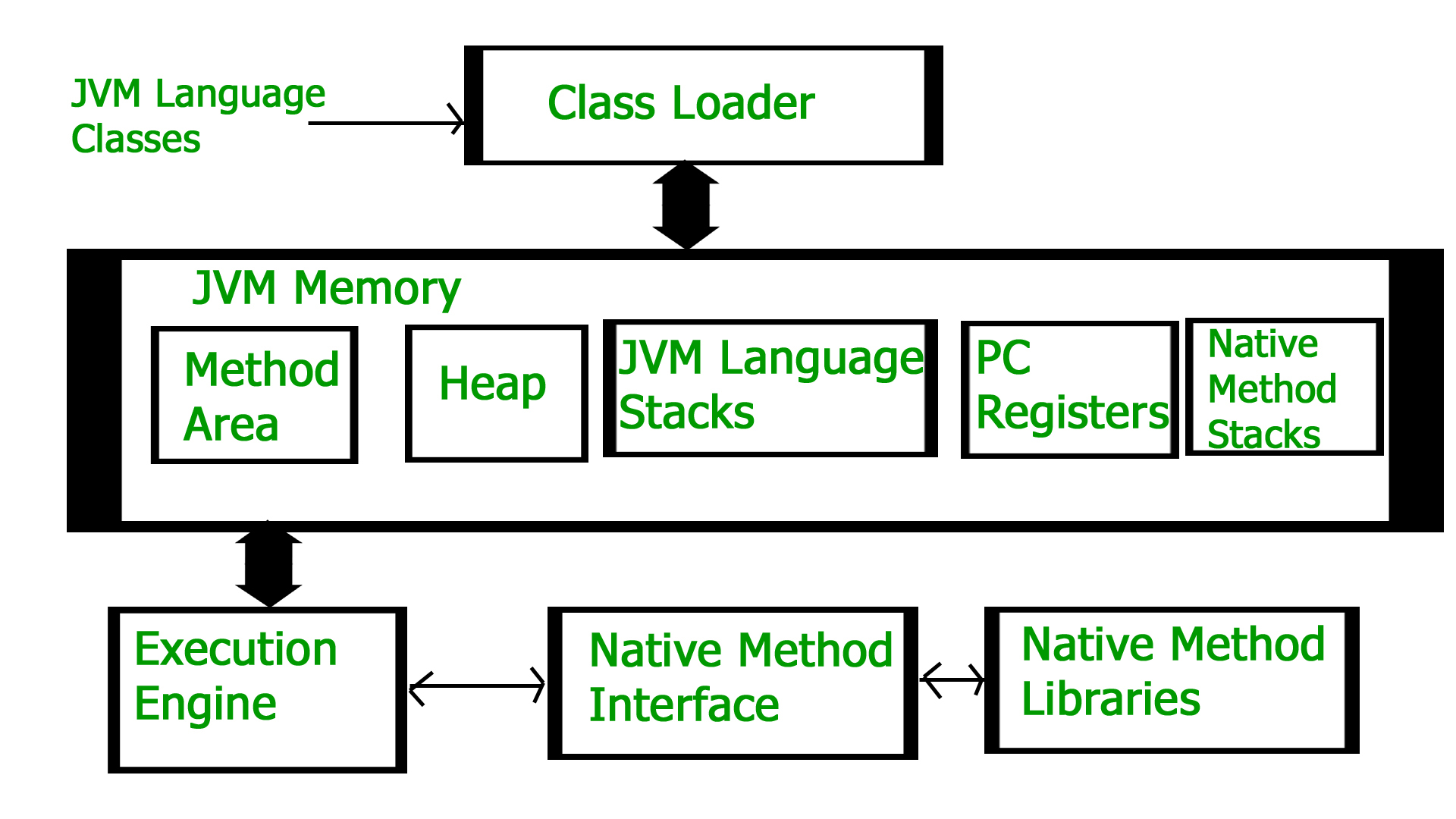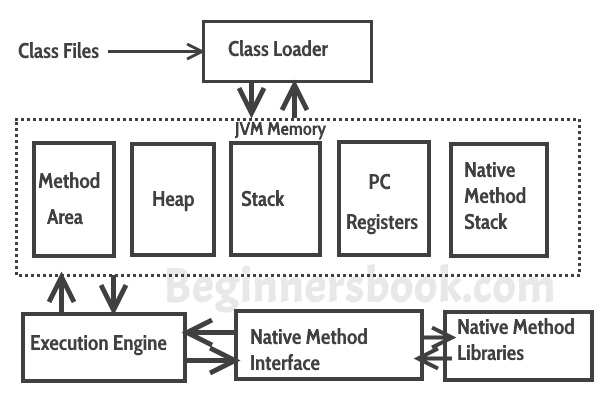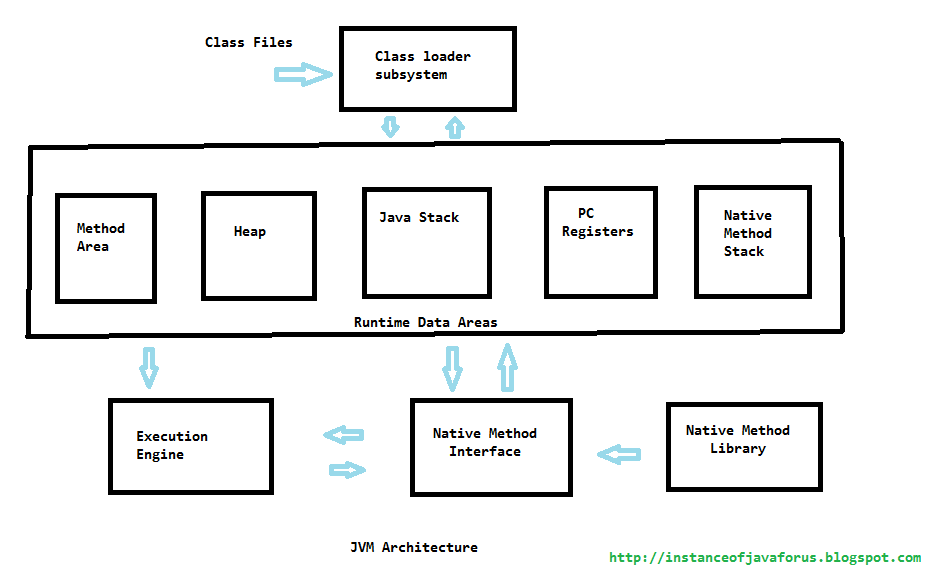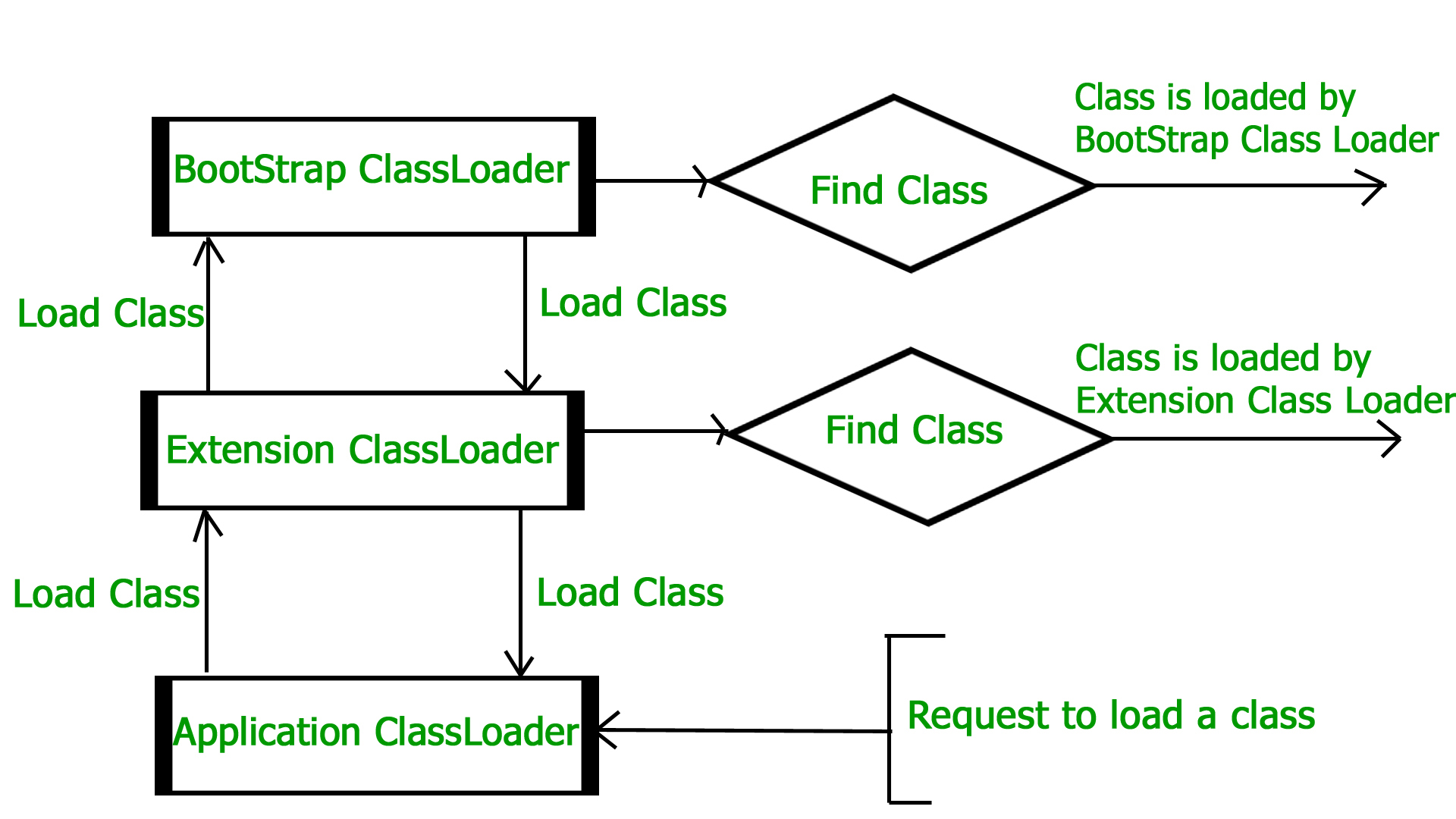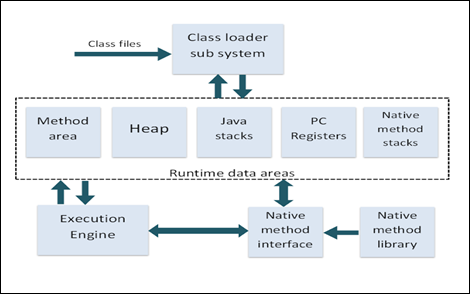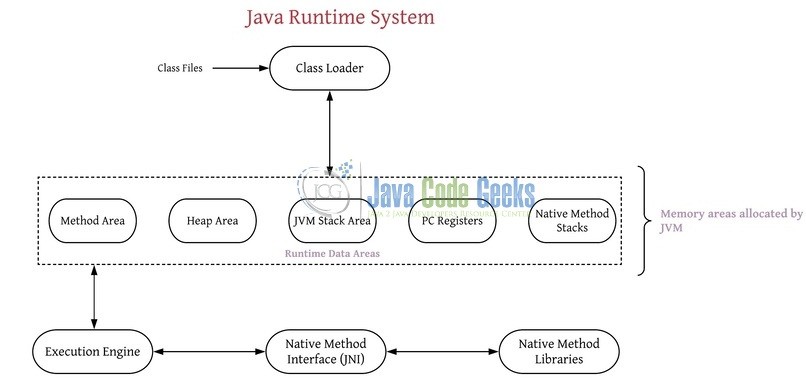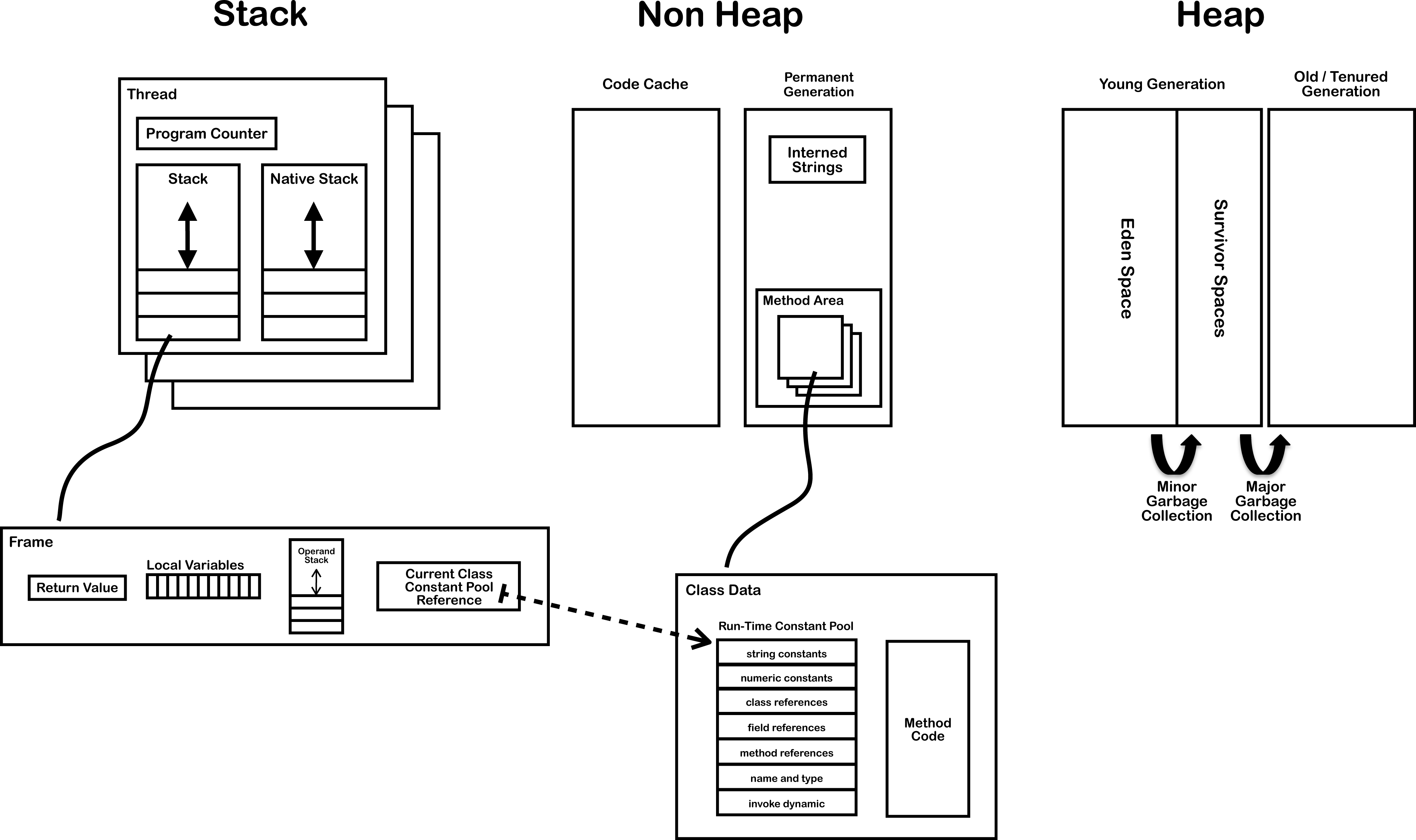Explain Jvm Architecture

A virtual machine is a software implementation of a physical machine java was developed with the concept of wora write once run anywhere which runs on a vm.
Explain jvm architecture. Java virtual machine jvm is a engine that provides runtime environment to drive the java code or applications. A virtual machine is a software implementation of a physical machine. It converts java bytecode into machines language. Jvm architecture in java with diagram class loader sub system.
Jvm is a part of jre java runtime environment. Java applications are called wora write once run anywhere. 2 class method area. Jvm java virtual machine acts as a run time engine to run java applications.
However java compiler produces code for a virtual machine known as java virtual machine. There are multiple implementations of jvm from different vendors for variety of platforms. Classloader is a subsystem of jvm which is used to load class files. Jvm stands for java virtual machine.
Jvm architecture 1 classloader. The compiler compiles the java file. Class method area stores per class structures such as the runtime constant pool field and. The class loader sub system is responsible for loading the class file byte code into the jvm.
Below goes the architecture of jvm. The class file is input to jvm which loads and executes the class file. It provides you with environment to execute your compiled programs called bytecode. Jvm is a part of java run environment jre.
Jvm is the one that actually calls the main method present in a java code. It is the runtime data area in. The compiler will be compiling the java file into a java class file. In this article i will explain the main components of jvm including memory management class loading and the garbage collector.
Java was developed with the concept of wora write once run anywhere which runs on a vm.
